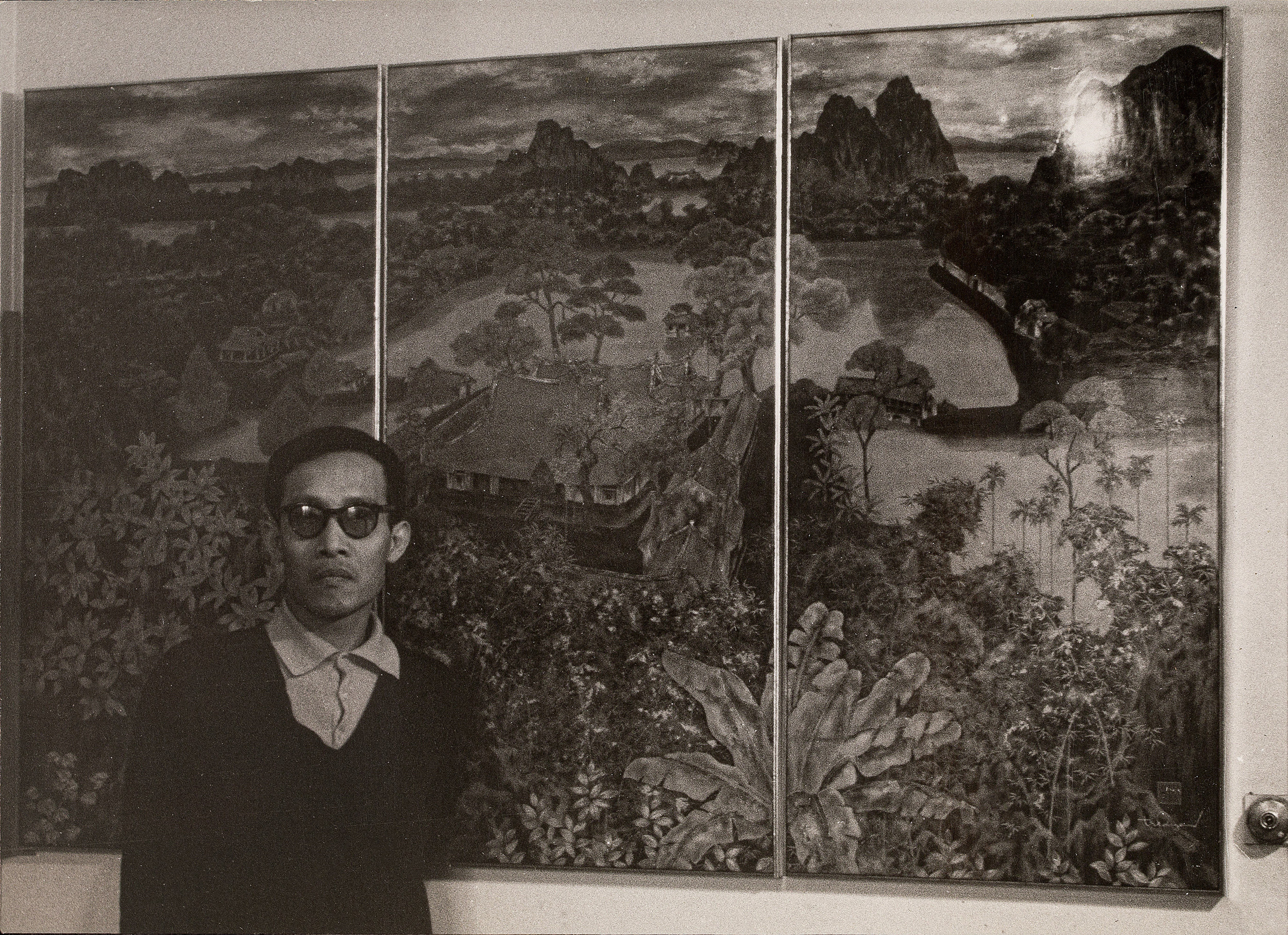
In 2018, two painting collectors, Le Quang Vinh and Pham Quoc Dat, when studying Indochina’s arts, discovered an article by an American woman about an exhibition titled "the forgotten treasure" where the paintings of Tran Phuc Duyen were displayed in Switzerland.
They decided to go to Europe to find the organizer of the exhibition. They were told that when Duyen, who had no children, passed away in 1993 in Bern, all of his art works, documents and souvenirs were packaged and stored at a castle in the suburbs.
As such, the 100 art works and relics fell into oblivion until 2013, when the new owner of the castle discovered the heritage and decided to look for the heirs of the painter. They contacted the niece of Duyen, Tran Tuong Van, who authorized a small gallery to organize an exhibition and sell the pieces of work to divide the properties.
By the day the two collectors came, some works had been sold, while the remaining paintings had been stored in poor condition. Most of the paintings were intact, while some were damaged.
“The paintings were put on the ground. There were some paintings comprising two pieces and they were torn apart to be sold separately. We felt really sad and decided to use all the money we had to buy back the heritage of the painter,” Dat said.
The two collectors met Van in Paris to talk about their willingness to buy back all the works of the painter with an aim of preserving the heritage and bringing the art of Tran Phuc Duyen back to Vietnam to introduce his achievements in the homeland.
After that, Le Quang Vinh and Pham Quoc Dat contacted experts, dividing the 100 paintings into groups of intact works that needed slight intervention and works that needed deep intervention.
Since Duyen used both Oriental and Western materials for his paintings, it was difficult to repair and restore the paintings, and they had to order materials from many countries. The restoration was asked to be implemented in a way to show the spirit of the late painter.
At present, the works are preserved in good condition at a temperature of 25oC and stable humidity of 60 percent, with no sunlight. Some works are framed with UV-resistant glass or mica, and the back is covered with acid-resistant paper.
Impressive exhibition after 30 years
A retrospective exhibition titled “Fated Encounters: Tran Phuc Duyen” will be organised in HCM City on July 22 – August 6 at Quang San Museum on the occasion of the 100th anniversary of the birth of painter Tran Phuc Duyen (1923-1993).
Nearly 150 paintings, 300 drafts, documents and relics were contributed by the two collectors Le Quang Vinh and Pham Quoc Dat, several other collectors, his family, and the museum.
The exhibition consists of two-floor space with a total area of about 600 sq m.
Van, who is Duyen’s niece and considers Duyen as her father, will return to Vietnam to attend the opening ceremony of the exhibition slated for July 22.
She felt heartbroken since receiving her uncle's ashes from Switzerland to be buried in France in 2013, and she had rarely mentioned the death of the uncle until the two collectors came to see her. She accepted the invitation to write a documentary about him; it took a year before she began reading the letters and papers again.
“I am happy as I can return to Vietnam on the occasion of the 100th anniversary of the birthday of my uncle – painter Tran Phuc Duyen. This may be the way he returns after he spent his whole life in Europe,” she said.
Duyen was a student at the Indochina Fine Arts College. After the school shut down in 1945, Duyen opened a studio, and lived and practiced art in Hanoi. In 1950, his three lacquer works were selected to be sent to the Vatican as a gift to Pope Pius, which are still kept at the Vatican Museum.
Duyen organized his first personal exhibition in Sai Gon in 1952. In the next seven years, he organized eight exhibitions in Europe. From 1968, when he moved to Switzerland to the last day of his life, he had 13 more exhibitions.
Gia Bao